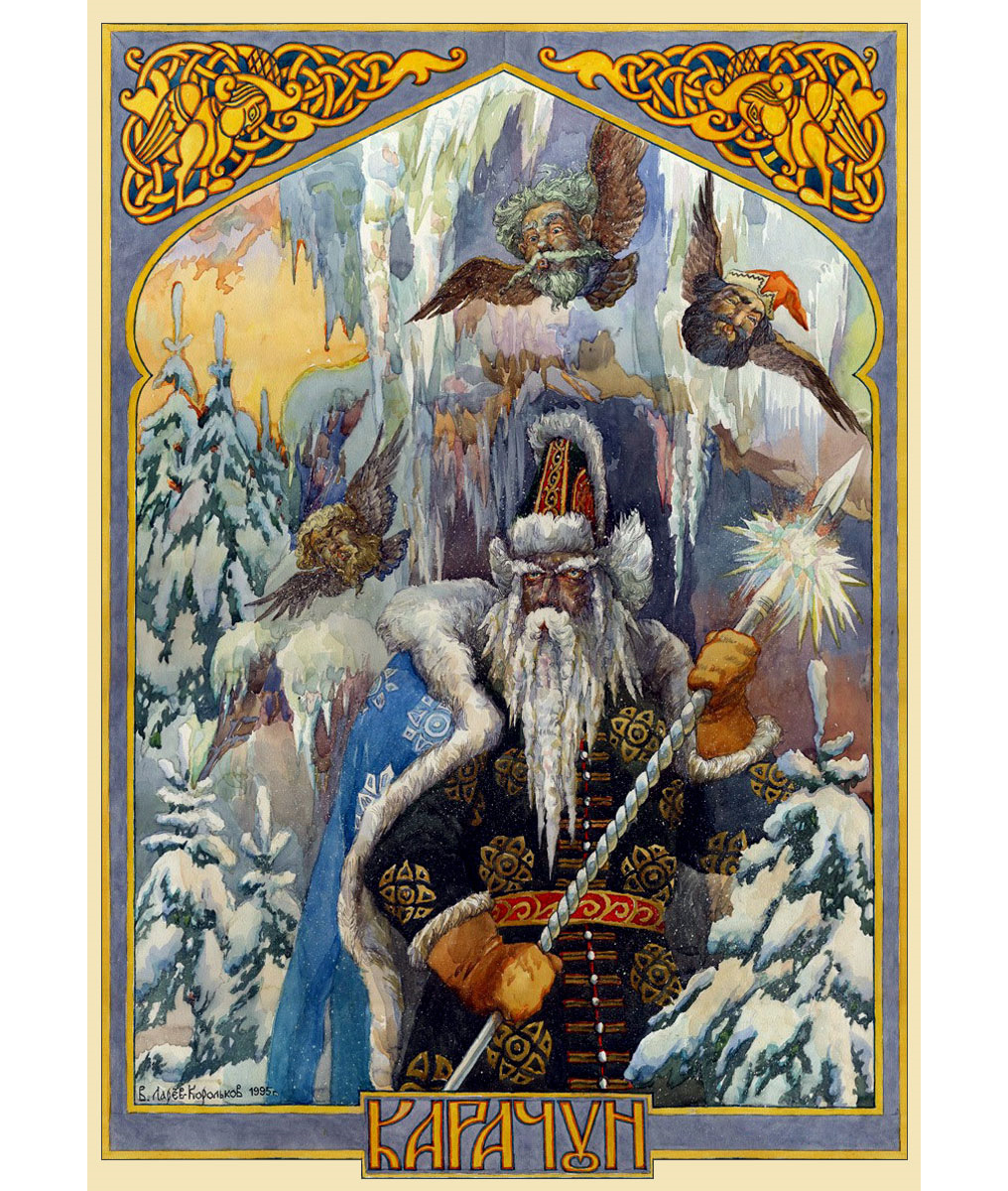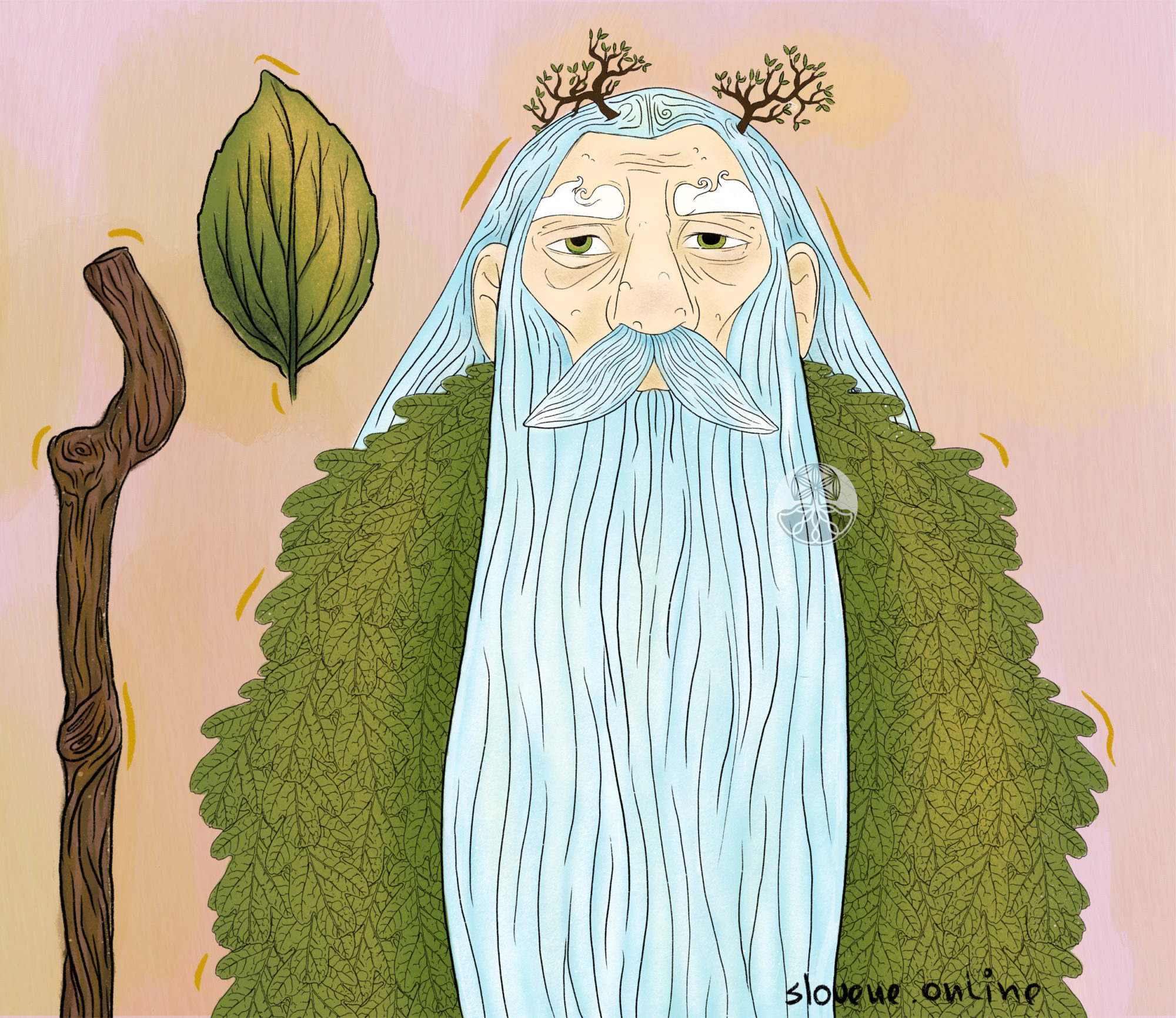KARACHUN (корочун, керечун, kračún, kračun, kraczun) in Slavic tradition. Karachun for Ukrainians, Poles, Slovaks, Moravians, Bulgarians, and Serbs – represents the winter solstice and the time period just before the new year, as well as a special bread and a tree, timed to this period of the year.
ꏍ
In the Russian and Belarusian languages, the word «karachun» also meant a sudden death, death at a young age, deathbed seizures, as well as an evil spirit or a demon that shortens life.
ꏍ
A common element of all these meanings is ‘a turn, a significant change in state’, represented in the names of the days of the winter and summer solstice, which are the border of winter and summer; in the description of death and the borderline state between life and death; in the names of evil spirits that cause death, especially premature death.
ꏍ
Also, krachun – is a special bread, known in the Carpathian region (among the Ukrainians, Ruthenians, Poles, Slovaks and Moravians). Krachun is considered a symbol of family wealth and has a special ceremonial and magical value. In Ukraine, wives and mothers used to bake it while dressed in an inside-out fur coat and in mittens. According to tradition, people usually put grains of various cereals, garlic, herbs in the middle of the bread, stuck a stalk of oats or a fir twig, they also tied krachun with a string of flax or hemp – all with a special purpose and a wish for wealth and good harvest.
ꏍ
In Slovakia, the krachun was divided between family members, given to house animals for good health and fertility, and the remainder was laid in front of the barn door for protection against witches. A piece of krachun and everything “baked” in it (people would put things inside on purpose) was used as medicine, amulets and powerful magical objects. Slavs also used krachun in divination by rolling it on the floor: if it rolled over onto the top crust, it meant misfortune in cattle breeding or the death of one of the family members. In Ukraine, people also used krachun for foretelling by looking at the shape it would take in the oven.
ꏍ
Have you come across these Slavic rites?
ꏍ
Source: Bogatyrev P.G. “Questions of the theory of folk art” 1971
Artist: Victor Korolkov “Karachun”
ꏍ

